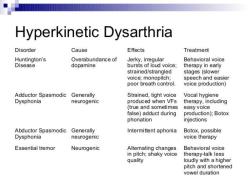What is the CPT code for revision of scar?
The specific CPT (Current Procedural Terminology) code for a scar revision procedure can vary depending on the nature and complexity of the scar revision. Scar revision procedures are typically coded based on factors such as the location of the scar, the size of the scar, the method of revision, and whether the scar is raised or depressed. Here are a few CPT codes commonly used for scar revision:
CPT 11440 - Excision, other benign lesion, except skin tag (unless listed elsewhere), face, ears, eyelids, nose, lips; excised diameter over 4.0 cm:
- This code is used for the excision of a larger facial scar or benign lesion.
CPT 14000 - Adjacent tissue transfer or rearrangement, any area; defect 10 sq cm or less:
- This code is often used when adjacent tissue is moved or rearranged to revise a smaller scar.
CPT 14001 - Adjacent tissue transfer or rearrangement, any area; defect 10.1 sq cm to 30.0 sq cm:
- This code is used when a larger area of adjacent tissue is involved in scar revision.
CPT 14020 - Tissue transfer, any area; defect 10 sq cm or less:
- This code may be used for more complex tissue transfer procedures for smaller scar revision.
CPT 14021 - Tissue transfer, any area; defect 10.1 sq cm to 30.0 sq cm:
- This code is appropriate for more extensive tissue transfer for larger scar revision.
CPT 11620 - Excision, malignant lesion, face, ears, eyelids, nose, lips; excised diameter over 4.0 cm:
- In cases where a scar revision is related to the excision of a malignant lesion in a facial area, this code may be used.
It's essential to consult with a qualified medical coder or healthcare provider to ensure the accurate CPT code is selected for a specific scar revision procedure. The appropriate code will depend on the individual circumstances and the specific procedure performed. Additionally, insurance carriers and reimbursement policies can influence the choice of CPT code and billing practices for scar revision procedures.
Revision of Scar: Decoding the Relevant CPT Code
Scar revision is a surgical procedure to improve the appearance or function of a scar. Scar revision can be performed for a variety of reasons, including:
- To reduce the size or prominence of a scar
- To improve the color or texture of a scar
- To relieve pain or discomfort from a scar
- To improve the function of a scar that is limiting movement or range of motion
The CPT code for scar revision depends on the size and complexity of the procedure. The most common CPT codes for scar revision are:
- 11400: Simple repair of skin or subcutaneous tissue, 2.5 cm or less
- 11401: Simple repair of skin or subcutaneous tissue, greater than 2.5 cm
- 11402: Intermediate repair of skin or subcutaneous tissue, 2.5 cm or less
- 11403: Intermediate repair of skin or subcutaneous tissue, greater than 2.5 cm
- 11404: Complex repair of skin or subcutaneous tissue, 2.5 cm or less
- 11405: Complex repair of skin or subcutaneous tissue, greater than 2.5 cm
In addition to the above CPT codes, there are a number of other CPT codes that may be used for scar revision, depending on the specific procedure performed.
Medical Coding for Scar Revision: Identifying the Appropriate CPT Code
To identify the appropriate CPT code for scar revision, medical coders should review the patient's medical record and the operative report. The medical record should document the size, location, and appearance of the scar, as well as the patient's goals for the procedure. The operative report should describe the procedure in detail, including the type of anesthesia used, the surgical technique, and any complications that occurred.
Once the medical coder has reviewed the patient's medical record and the operative report, they can select the appropriate CPT code based on the size and complexity of the procedure.
Billing for Scar Revision: The CPT Code You Need to Know
When billing for scar revision, it is important to use the most accurate and specific CPT code possible. Using the correct CPT code will help to ensure that the claim is processed correctly and that the provider is reimbursed appropriately.
In addition to the CPT code, medical billers should also include the following information on the claim:
- The patient's name and date of birth
- The provider's name and National Provider Identifier (NPI)
- The date of service
- The diagnosis code(s) for the scar revision
- The place of service code (POS code)
- The modifier(s), if any
By including all of the required information on the claim, medical billers can help to ensure that the claim is processed correctly and that the provider is reimbursed appropriately.
Conclusion
Scar revision is a surgical procedure to improve the appearance or function of a scar. The CPT code for scar revision depends on the size and complexity of the procedure. To identify the appropriate CPT code for scar revision, medical coders should review the patient's medical record and the operative report. When billing for scar revision, it is important to use the most accurate and specific CPT code possible.













